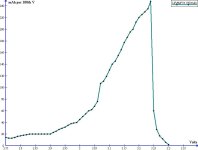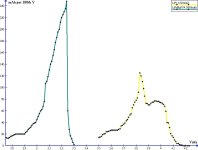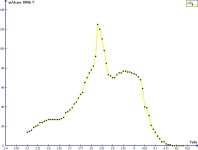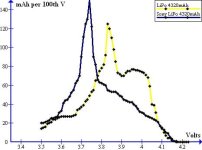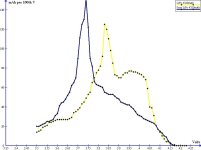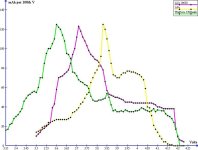DrkAngel
1 GW
Apparently the cells, that I believed to be LiFePO4, are in actuality -
lithium iron magnesium phosphate LiFeMgPO4
I suspected something to be odd, when my iMax, set to LiFe - 3.6V charge, only charged the cell to 3.4V ...
Yes! I did test additional cells, from multiple packs, all similar!
Further inspection found "Valence Technology" on the battery's "host device".
Investigation suggested - LiFeMgPO4
Anyhow, this discharge curve is extremely different, from anything else, that I have charted!
Charge settled to 3.36V, overnight.
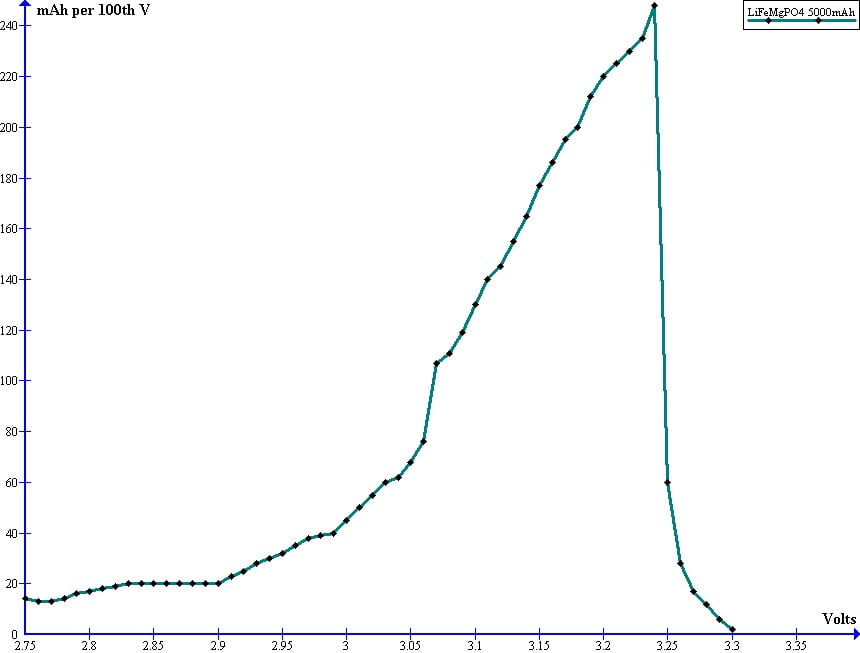
The "host device" case, lists voltage at 12.8V, (4 cells = 3.2V per cell), which is, right in the center of the mah peak.
The cells seem specifically designed to provide an extremely stable 12V power supply.
Lets add a "LiPo", for comparison!
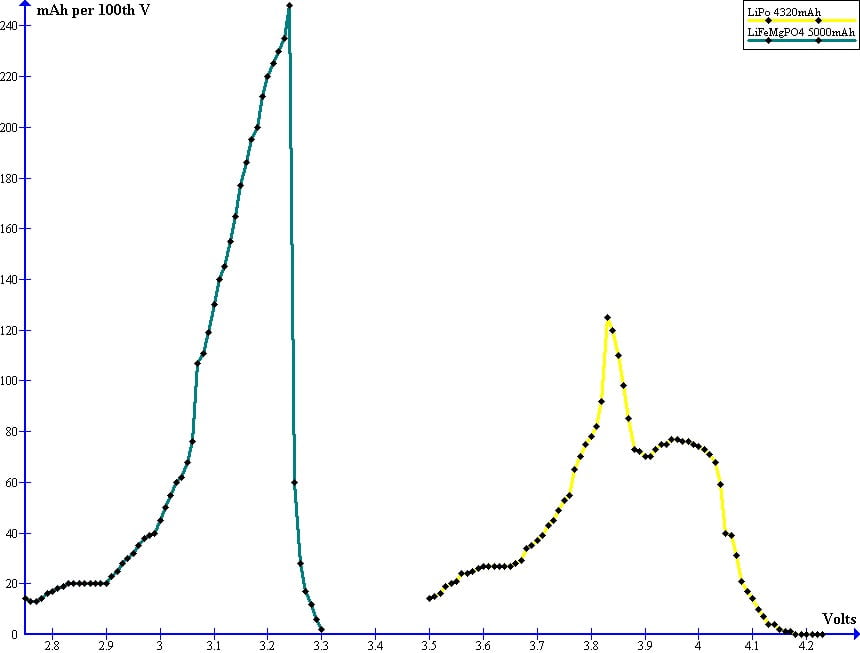 .
.
Odd duck ... but presents a multitude of possibilities!
lithium iron magnesium phosphate LiFeMgPO4
I suspected something to be odd, when my iMax, set to LiFe - 3.6V charge, only charged the cell to 3.4V ...
Yes! I did test additional cells, from multiple packs, all similar!
Further inspection found "Valence Technology" on the battery's "host device".
Investigation suggested - LiFeMgPO4
Anyhow, this discharge curve is extremely different, from anything else, that I have charted!
Charge settled to 3.36V, overnight.
The "host device" case, lists voltage at 12.8V, (4 cells = 3.2V per cell), which is, right in the center of the mah peak.
The cells seem specifically designed to provide an extremely stable 12V power supply.
Lets add a "LiPo", for comparison!
Odd duck ... but presents a multitude of possibilities!


